The Tulip Chair was designed byEero Saarinenin 1955 and 1956 for the Knoll Company of New York City. It was designed primarily as a chair to match the complementary dining table. The chair, a classic of industrial design, has the smooth lines ofmodernism并在其时间进行了实验。
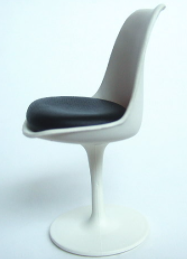
Image source:https://en.wikipedia.org/wiki/Knoll_(company)#/media/File:Tulip_chair.jpg
How was the Tulip Chair conceived and Why?
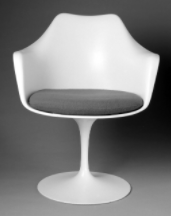
Image source:https://search.creativecommons.org/photos/1afb3ee4-b366-43d7-ab65-bd1143b73948
Like many contemporary architects,Eero Saarinenwaschallenged by furniture design, especially thechair, which presents审美和structural problems特别难以解决。尤其,Saarinen’s objective was to resolve the “ugly, confusing, unrestful world” underneath chairs and tables, and in order to do that, he designed a chair that could be “all one thing again”. The Tulip Chair, with its only leg, is therefore an accomplishment of modern design and a timeless addition to the furnishing industry.
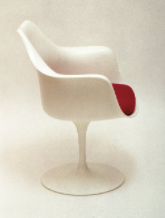
Image source:https://search.creativecommons.org/photos/13b2388b-100a-4d3f-b3fd-670095b00ed3
“典型的内部椅子和桌子的底盘使一个丑陋,令人困惑,无礼的世界。我想清除腿的贫民窟。我想让椅子再次做一件事。”
风格时代之间的桥梁
The Tulip Chair is often considered “太空时代”curves和人造材料. It is in fact a piece of furniture that can be seen asa bridge between two artistic currents: the soberInternational Style和异想天开的古怪postmodernism. Likewise, the chair sets new standards for modern design, being an accomplished effort inclarifying form.
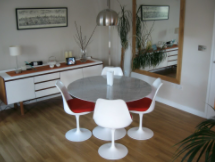
Image source:https://search.creativecommons.org/photos/a6bfb037-f069-425b-9e21-d74751c9a39ebyEl gran sueño – Asturias
Patent and Versions
Designed in1955,Saarinenwas awarded apatent for the Tulip Chair上ly five years after, in1960. He realisedtwo versionsof the chair: one with the armrests and one without them. The former falls under the name of “Tulip Arm Chair”, while the latter is called “郁金香无臂椅”. Each of these two versions has also a variation with cushions both on the seat and the backrest.
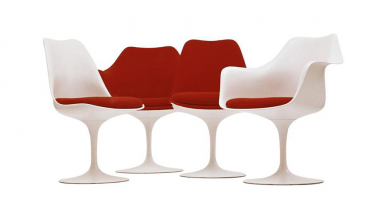
Image source:https://en.wikipedia.org/wiki/Tulip_chair#/media/File:Tulip_med.jpg
Which are the Materials of the Tulip Suite?
Saarinenhad hoped to produce the chair as a上e piece unit made entirely offiberglass,但是这个材料是not able to support the base, and prototypes were prone to breakage. As a result, the base of the Tulip Chair is ofcastaluminumwith arilsan-coatedfinishto match the upper shell, giving the appearance of a single unit. The upper shellis moldedfiberglass, with a reinforced,plasticbonded finish. The upholstered foam cushion is removable with拉链盖和魔术贴固化.
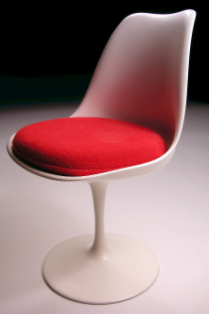
Image source:https://en.wikipedia.org/wiki/Eero_Saarinen#/media/File:Saarinen_Tulpanstolen.jpg
Data Sheet
- 设计师: Eero Saarinen;
- Year of design:1955-1956;
- Manufacturer: Knoll;
- Provenance: USA.
信息来源:
https://en.wikipedia.org/wiki/Tulip_chair
https://www.knoll.com/product/tulip-arm-chair
https://www.britannica.com/biography/Eero-Saarinen
https://knoll.com/product/tulip-arm-chair?section=Design
https://knoll.com/product/tulip-armless-chair?section=design

